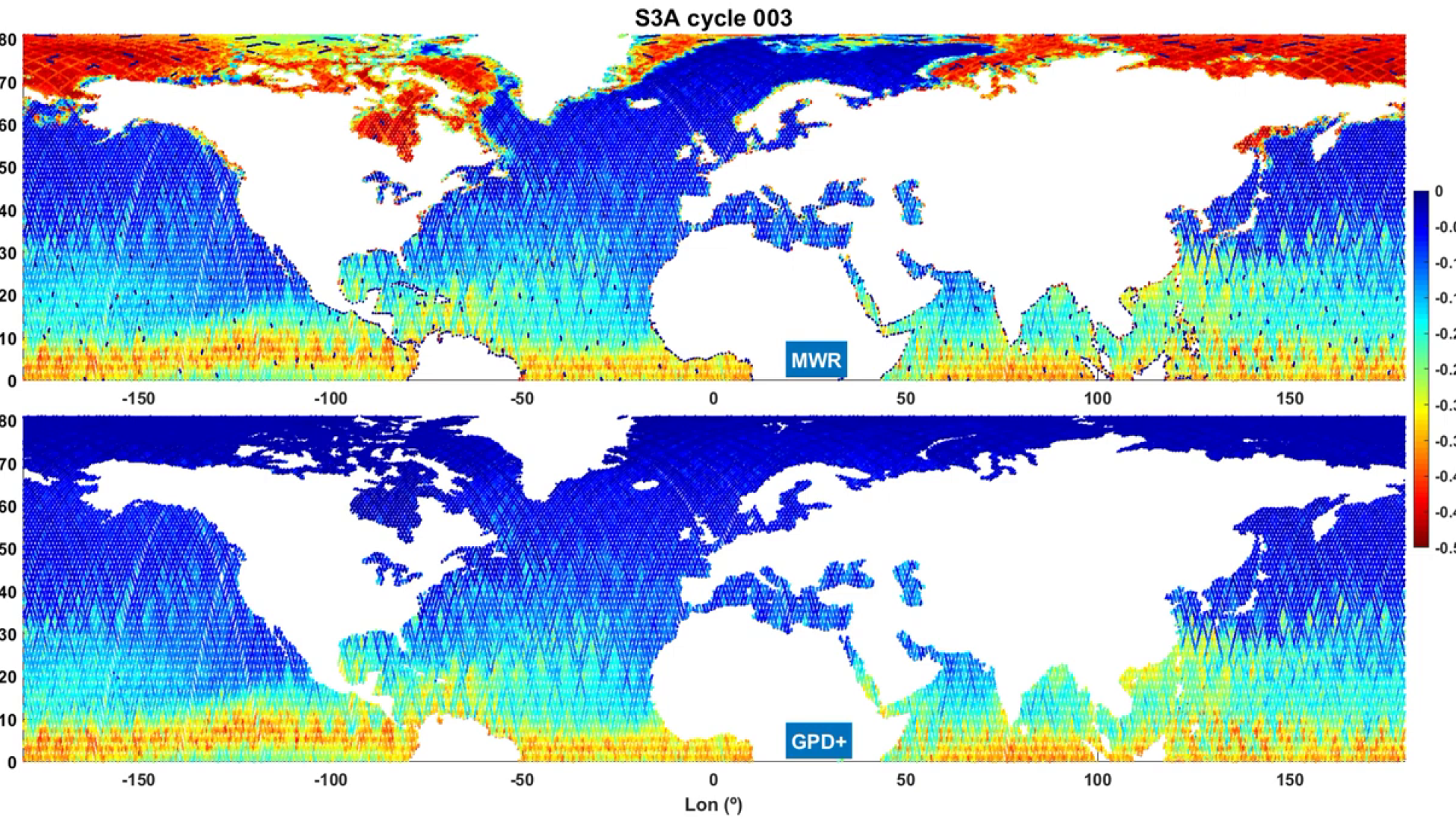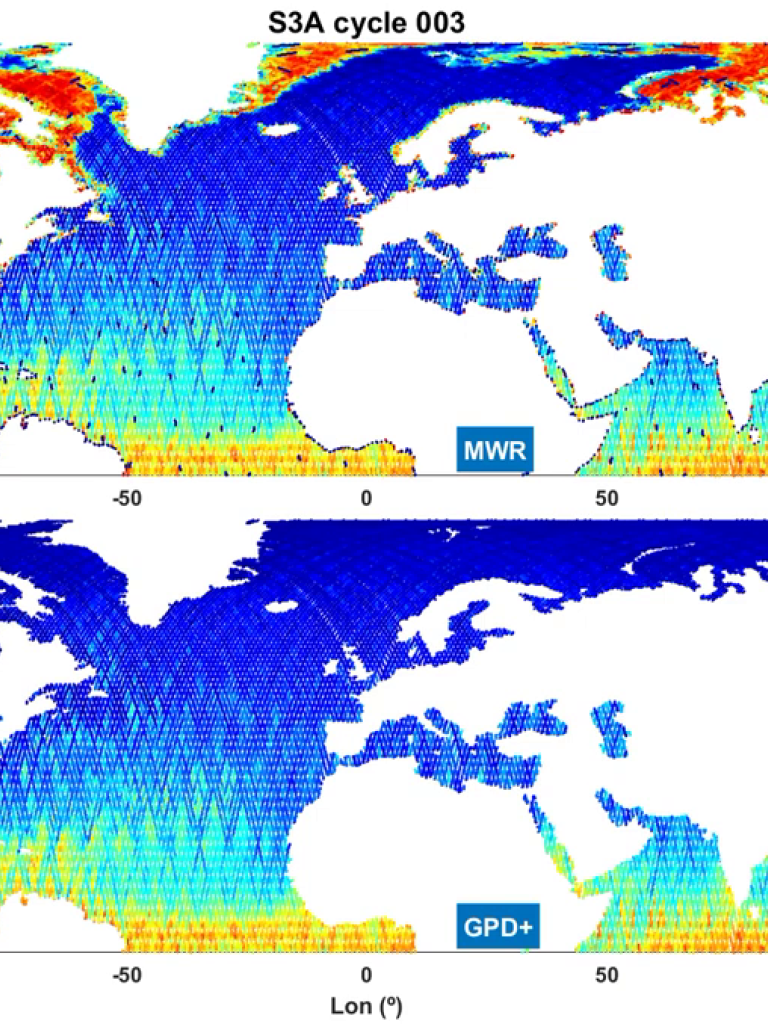30 May 2022
03 December 2021
By M. Joana Fernandes, Clara Lazaro (University of Porto), Carolina Nogueira Loddo and Bruno Lucas (EUMETSAT)
Developed at the Faculty of Sciences (University of Porto, Portugal), the GNSS-derived Path Delay Plus (GPD+) algorithm provides global improved wet tropospheric correction (WTC) for radar altimeter observations, particularly over coastal and polar regions, where the default correction from an on-board MWR is usually invalid. MWR is the Microwave Radiometer flying on-board Sentinel-3 and is used to derive signal delays due to the Wet Troposphere. The WTC is used to correct the Sea Level measured by the radar altimeter (SRAL).
As a preliminary assessment the GPD+ WTC was computed for about ten years of data, between S3A and S3B, from the start of mission until the end of April 2021. Both reprocessed data and operational NTC data were used, but all were part of Baseline Collection 004.
The GPD+ WTC products are planned to be used in the operational processor in mid-2022 and will be available in the SRAL/MWR L2 NTC products. This evolution will be part of a Processing Baseline that includes other major evolutions and will be used for the full mission reprocessing in 2022.
This product has been generated combining data, by space-time objective analysis, of all available valid WTC measurements (from the on-board MWR, scanning imaging MWR (SI-MWR) and GNSS) in the vicinity of the estimation point. The GPD+ WTC preserves the properties of the best available WTC, i.e. the one from the on-board MWR, and further extends this correction to regions and epochs where and when the former is not valid.
In the context of the Sentinel-3 mission, the key aspects of this product are:
- Enhanced quality flagging of the WTC from its on-board MWR.
- Relative to the on-board MWR, it allows the recovery of 10% to 15% of the points per S3 cycle with valid sea level anomaly, which otherwise would be rejected.
The final GPD+ values are:
- Equal to the S3 MWR-derived WTC, for all S3 points with valid MWR observations.
- New WTC estimates obtained by data combination of the closest (in space and time) valid observations whenever these exist, for all S3 points with invalid MWR-derived WTC.
- The first guess used in the estimation (ERA5-derived WTC) in the absence of valid observations.
In this way, GPD+ provides a continuous set of WTC for the Sentinel-3 Marine L2 products (SR_2_WAT___), valid over all surface types, ensuring an improved data coverage, mostly in coastal and polar regions, and filling existing gaps in the valid MWR observations.


